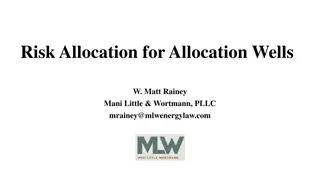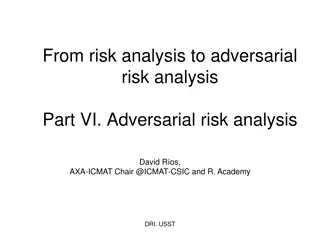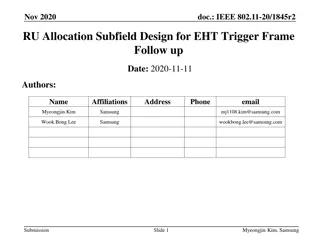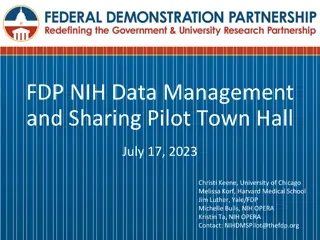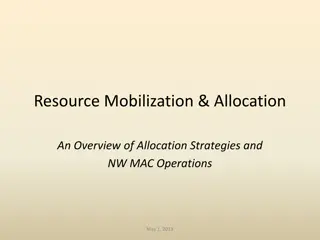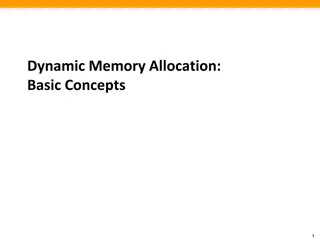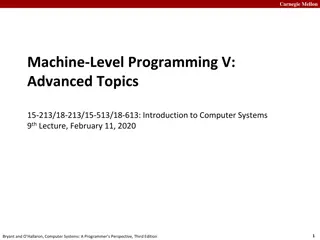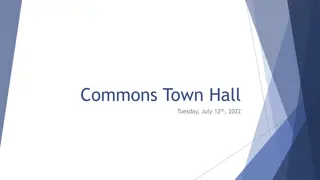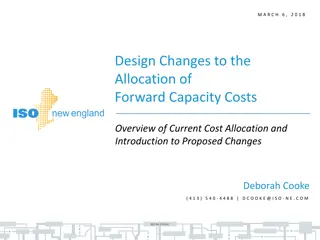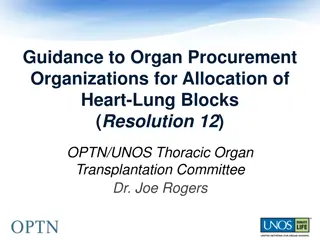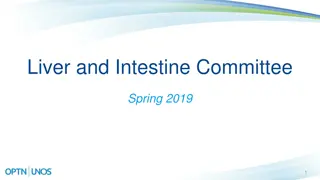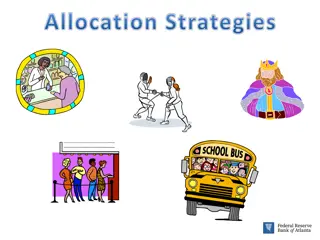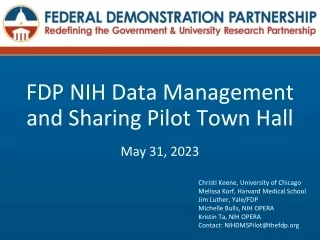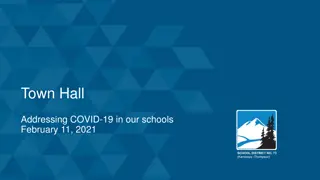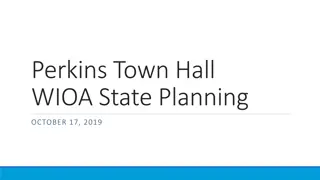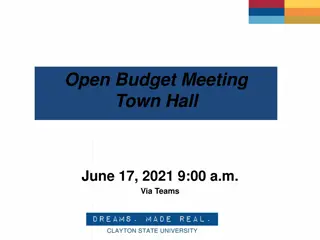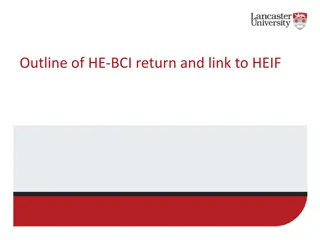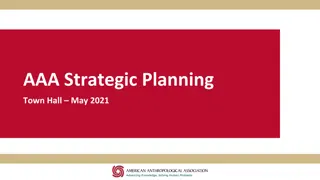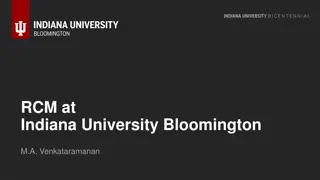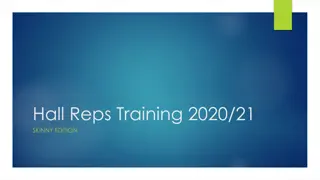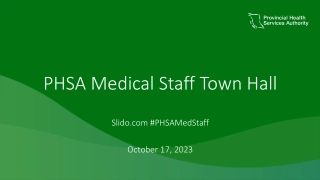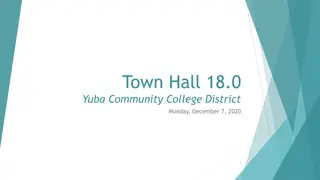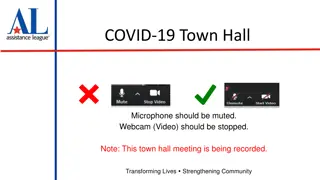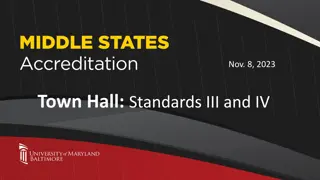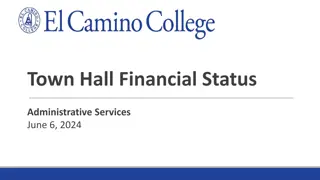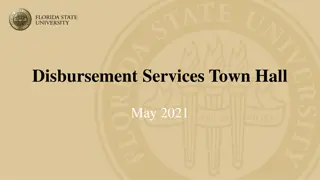Strategic Resource Allocation Town Hall Data Overview
The Strategic Resource Allocation Town Hall held on 04/25/2023 discussed the process overview, sources of data, and template walk-through for efficient resource allocation. The facilitation team collaborated with task forces, using centrally available data to analyze history, development, expectations, and external demands like incoming students' interests. Data from academic programs, financial records, and quality outcomes were also explored. Overall, the event aimed to improve decision-making through data-driven insights.
Download Presentation

Please find below an Image/Link to download the presentation.
The content on the website is provided AS IS for your information and personal use only. It may not be sold, licensed, or shared on other websites without obtaining consent from the author. Download presentation by click this link. If you encounter any issues during the download, it is possible that the publisher has removed the file from their server.
E N D
Presentation Transcript
Strategic Resource Allocation Town Hall Data Walkthrough & Discussion Jake Morrison: Interim Executive Director Institutional Effectiveness Toni Habegger: Associate Vice President Chief Financial Officer Admir Djulovic: Manager Data Analytics SRA Town Hall - 04/25/2023
Contents 1. Process Overview 2. Sources of Data 3. Template Walk-through 1. History, Development, and Expectations 1. Program Provided Data 2. External Demand 3. Internal Demand 4. Quality Inputs and Processes 5. Quality Outcomes 6. Size, Scope, and Productivity 7. Financial Data 8. Impact, Justification, and Overall Essentiality SRA Town Hall - 04/25/2023
Process Overview The facilitation team provides the two task forces with a catalog of centrally available data The facilitation team in consultation with task forces determines data set for inclusion with the templates The facilitation team and the task forces spent many hours working collaboratively to smooth out the data and its presentation SRA Town Hall - 04/25/2023
Sources of University Provided Data Banner Student Banner Finance Banner HR/Payroll SRA Town Hall - 04/25/2023
I. History, Development, and Expectations Data in this section to be provided by the template completer SRA Town Hall - 04/25/2023
Program Provided Data The template completer will insert their narrative in a text box like this The template completer will insert website reference here like this: https://data.bls.gov/cew/apps/data_views/data_views.htm#tab=Tables SRA Town Hall - 04/25/2023
II. External Demand SRA Town Hall - 04/25/2023
II. External Demand Incoming Students Declared Area of Interest: When students apply, they have the option to submit an area of interest. This is stored as an undeclared major on the student s record. - Not all majors are associated with an undeclared major - Some majors have pre majors, which have specific requirements for a student to declare First Time Major Declaration: The number of students who formally declared this major program during the indicated academic year; it only includes those who declare a major for the first time, not those who add or change a major SRA Town Hall - 04/25/2023
III. Internal Demand SRA Town Hall - 04/25/2023
III. Internal Demand Total SCH (Student Credit Hours): This is also reported at the program level below. It includes all SCH for the subject code (rarely multiple subject codes) for that academic year Fill Rate: The median and average (mean) fill rate of classes in this subject code. It will include all undergraduate (100-400 level) or all graduate (500-600 level) classes depending on whether the program is undergraduate or graduate offered in that subject during that academic year. This calculation excludes one-on-one courses, like independent studies, thesis credits, internships, music lessons, practicums, etc. SRA Town Hall - 04/25/2023
III. Internal Demand Class Size: The median/average size classes in this subject code. This measure will include all undergraduate (100-400 level) or all graduate (500-600 level) This calculation is done two ways: one includes all classes, the second excludes one-on-one courses, like independent studies, thesis credits, internships, music lessons, practicums, etc SRA Town Hall - 04/25/2023
III. Internal Demand SCH in Program: Includes all SCH taken by students in this program within this Department code for the academic year. SRA Town Hall - 04/25/2023
III. Internal Demand (Example) Enrolled students and their major Department A - Program X - Program Y - General Education - Service Program X Program X Program X Program X Program Y Program Y Program Y Program Y 1 credit class Total of 10 SCH Program X 5 students 5 SCH Program Y 5 students 5 SCH General Education 1 student 1 SCH Service 1 student 1 SCH General Education Service SRA Town Hall - 04/25/2023
IV. Quality Inputs and Processes SRA Town Hall - 04/25/2023
IV. Quality Inputs and Processes Faculty by Type: The number of full-time faculty with primary appointments in this subject area. Tenure track faculty includes tenured faculty (assistant professor, associate professor, and professor) while lecturer includes lecturer, senior lecturer, and visiting assistant professor. These numbers are reported in October of each academic year (so 2022 is the number of faculty in October 2021). SRA Town Hall - 04/25/2023
IV. Quality Inputs and Processes Percent of SCH by Faculty Type: Within the subject area, the percentage of student credit hours delivered by: tenure track and tenured faculty, lecturers and senior lecturers, adjunct instructors, and GSAs (graduate student assistants) SRA Town Hall - 04/25/2023
IV. Quality Inputs and Processes Curricular Bottlenecks: A class with a fill rate over 90% and a DFW ( D, F, Withdrawal) rate over 20% is a bottleneck Average Incoming HS GPA: the high school GPA of undergraduate students in that program that year. Average Incoming Transfer GPA: the GPA of transfer students from their previous institution(s) for all undergraduate students in that program that year SRA Town Hall - 04/25/2023
V. Quality Outcomes SRA Town Hall - 04/25/2023
V. Quality Outcomes DFW Rate: Percentage of students who attempted a class in this subject and received a D, F, or W. Each class/student combination counts as one, so a single student could be counted in the DFW rate more than once if they received that outcome more than once in an academic year in that subject SRA Town Hall - 04/25/2023
V. Quality Outcomes Removed Graduation Rate: The percentage of students who declared/entered in the program in the indicated academic year and go on to graduate at any time with that program on their transcript. Note that we end in 2016 to allow students six years to graduate. Percent of Graduates above x.xx GPA: The proportion of graduates from the given year whose EWU cumulative GPA is greater than x.xx SRA Town Hall - 04/25/2023
VI. Size, Scope, and Productivity Number of Majors: The number of distinct students who had a declared major at any point during the academic year in the listed major. Number of Graduates: The number of students who graduated in that academic year with that program listed on their transcript SCH in the Program: This includes all SCH taken by students in this program within this subject code for the academic year SRA Town Hall - 04/25/2023
Financial Data for Academic Programs Banner Finance FY2022 (July 1, 2021- June 30, 2022) Chart of accounts (ORG) is generally at department level Revenue Index 1 revenue is attributed to each program based on net operating fees per SCH Index 2 directly attributed to programs where appropriate (e.g. graduate on line accelerated programs) Allocated to programs based on SCH for other index 2 revenue (course fees, etc) Index 5 Department grants are one program
Cost Allocation Methodology Department (subject) SCH total Primary allocation of SCH General education and services courses (course level) SCH Remaining SCH are distributed to programs based on student attribute Further allocation to achieve adjusted SCH Gen Ed is weighted due to size of courses Graduate SCH are weighted due to greater level of effort/attention
VIII. Cost Allocation (Example- non weighted) Total SCH taught: 100 Department A SCH by Program Program Program X (Masters) Program Y (Bachelors) General Education Service Percent of SCH 15 25 35 25 15% 25% 35% 25% Department Cost: $100,000 Department A Percent SCH Program Program X (Masters) Program Y (Bachelors) General Education Service Cost Allocation 15% 25% 35% 25% $15,000 $25,000 $35,000 $25,000 SRA Town Hall - 04/25/2023
VIII. Cost Allocation (Weighted Example) Masters programs receive a standard 1.33x weighting due to increased smaller classes and increased effort. Total SCH Taught: 100 Department A Program Program X (Bachelors) Program Y (Masters) General Education Service SCH by Program Weighting Weighted SCH 15 25 35 25 Weighted % 1 15 19% 42% 22% 16% GE & Service weighting: = ??? ??????? ????? ???? ?? ?????? ????? ???? 1.33 0.5 0.5 33.25 17.5 12.5 Department Cost: $100,000 Department A Program Program X (Bachelors) Program Y (Masters) General Education Service SCH by Program Weighted SCH % Cost Allocation- Weighted 15 25 35 25 * Each subject with GE will have this weighting applied 19% 42% 22% 16% $19,000 $42,000 $22,000 $16,000 SRA Town Hall - 04/25/2023
IX. Impact, Justification, and Overall Essentiality SRA Town Hall - 04/25/2023
IX. Impact, Justification, and Overall Essentiality Proportion of students _____ : The proportion of students who self-identify as _____ within the program SRA Town Hall - 04/25/2023
Data Source Banner Finance for revenues and expenses FY2022 (July 1, 2021- June 30, 2022) Chart of accounts (ORG) is generally at department level Indexes provide additional detail Banner HR/Payroll for number of employees paid
Financial Data for University Services Programs Revenue Index 2 revenue is attributed to program based on org code level Index 3 revenue is specific to program Auxiliaries such as Housing, Dining, Bookstore, PUB, URC, Parking, Athletics, ASEWU Some programs will have index 2 and index 3 revenue
Expenses Index 1 expenses at ORG or index level Index 2 expenses allocated same as revenues 200xxx generates revenue and has expenses Index 3 expenses allocated same as revenues Allocated items Staff effort which applies to more than one service area is allocated by percentage Source is the effort survey





